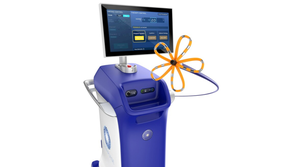E-Beam Melting Process Yields High-Flex Parts for Bone Implants
June 12, 2006
Originally Published MPMN June 2006
INDUSTRY NEWS
E-Beam Melting Process Yields High-Flex Parts for Bone Implants
|
A rapid manufacturing and prototyping system based on electron-beam melting technology can produce titanium bone implants with a high flexural strength and long cycle life. |
A rapid manufacturing and prototyping system that can produce 100% solid-metal parts significantly faster than other methods hopes to conquer the U.S. market. Arcam AB (Mölndal, Sweden; www.arcam.com), which developed the CAD-to-metal process, has granted exclusive North American distribution rights for its EBM S12 system to the rapid prototyping firm Stratasys Inc. (Minneapolis; www.stratasys.com).
The system is based on electron-beam melting (EBM), and it is suited for applications that require high strength or exposure to elevated temperatures. Makers of bone implants can benefit from the resulting part’s flexural strength.
The EBM S12 fully melts metal particles in a vacuum environment. The solid, void-free parts are free of imperfections that may be caused by oxidation. In addition, the system produces parts as much as five times faster compared with other additive fabrication methods, according to the firm.
EBM builds parts in layers following a tool path defined by CAD geometry. Each layer is formed as the E-beam passes over a bed of metal powder. The beam liquefies the powder in fine paths, forming the required shape. In laser-based sintering processes, 95% of the light energy is reflected by the powder. By contrast, the E-beam system achieves a 95% powder recovery yield while consuming an average 7 kW of power.
Titanium parts manufactured using this method are comparable in quality with wrought titanium components, and they are better than cast titanium products, according to the firm. Ti6AL4V and Ti6AL4V ELI alloys can be processed using the EBM technique. Near-net-shape and heat-treatable parts can be built in sizes to 200 × 200 × 180 mm with a layer thickness of 0.05 to 0.2 mm.
Copyright ©2006 Medical Product Manufacturing News
You May Also Like



